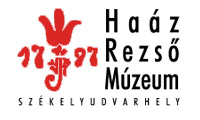Kovács Petronella (szerk.): Isis - Erdélyi magyar restaurátor füzetek 10. (Székelyudvarhely, 2010)
B. Perjés Judit - Domokos Levente - Puskás Katalin: Tíz nap a "Nagy-Küküllő felső folyása mentén" avagy hazi és vendég restaurátorok a székelykeresztúri Molnár István Múzeum születő állandó kiállításán
glued to the back after drying. It was followed with more layers of brick red paper, the last one of which enclosed the lattices nailed along the two longer edges of the assembled máché. During transportation, the lattices protected the máché from breaking, they helped in fixing it to the wall and ensured that it did not touched the wall. When the máché was disassembled, a huge closed channel appeared along the walls of the room. Air current was generated in the common space of colder and warmer wall surfaces, which facilitated the balancing of the moisture content. Regarding the precipitation of the moisture, this structure is a third type that is less apt to become moist. Nevertheless, the máché suffered from mould infection in a length of about four metres in consequence of repeated soaking with leaking water, so it had to be dismantled. After mechanical cleaning, the surfaces were cleaned and sealed with a thick Glutofix solution. The smaller repairs were made with poly(vinylacetate) dispersion adhesive, with gluing sulphate paper strips on the surfaces. The areas of the máché chosen for taking negatives were isolated by several layers of 5% alcoholic solution of Regnal (poly(vinyl-butiro-acetal). Next the borders of the chosen areas were surrounded with plasticine, and, due to the concave, arched surface, it was moulded with plaster in three phases. After the consolidation of the plaster, the máché was carefully removed from the negative, the surface of which was isolated with Regnal and then beeswax. Then the máché copies were made in the followings: first a layer of white (sulphite pine cellulose, 28 SRo) paper was laid, then six layers of brown sulphate paper (120 g/m2) with rye-flour paste followed, next, when it had dried, another layer of white paper came followed by six more layers of brown paper. When they had dried, the backside was covered with loosely-woven calico, which was covered with a final layer of brown paper. After complete drying, the máché was turned out of the negative and its surface was coated with a cold chalk layer. This will help the removal of the applied paint layers during a later conservation. The disinfection and the consolidation of the multilayer paper material attacked by fungi is one of the gravest problems of the conservation of máché stuccos. Often only saturation in vacuum can help. Descriptions in the technical literature often mention saturation with acryl derivates. This process lends a great stability to the máché, however, it changes the properties of the object and it is irreversible. We did not apply such saturation at the papier máché stuccos we conserved. Generally plasterers treat the papier máché stuccos and not paper conservators. But the two material types, the inorganic plaster and the complex papier máché made of organic materials demand different treatments. Máché stuccos have become scarce because of their sensitive materials. Another and unacceptable reason is that in our enterprise-centred world they are replaced by plaster stuccos, sometimes for large sums of money, perhaps in lack of expertise. Papier máché stuccos are more-or-less exquisite evidences of an already extinct technology of a past world. It is our duty to preserve them. Nemes Takách László Object conservator MA 1091 Budapest, Üllői út 21. Phone: +36-1-215-2190 E-mail: tatorlac@gmail.com Raluca Marilena Dumitrescu The restoration of three glass icon paintings from Nicula and Gherla centers from Cluj county, Romania The icons painted by unknown masters, dated in the second half of the nineteenth century were accomplished in the famous painting centers of Nicula and Gherla in Cluj County. The thin sheet of glass has the specific irregularities which are typical for the glass workshops ’’glăjării”. The wooden frames of the icons are simple, with a smart joining system. The two icons from Nicula, presenting Saint Paraschiva and Saint Nicholas have a simple composition, with a naive drawing and vivid colors, while the third icon titled ’’The Grieving Mother” from Gherla, has a more elaborate composition, with more refined features, though still naive, and red and black as dominant chromatic scale. The icons belong to private property, but three authentic icons have been found at Nicula Monastery, with very similar drawing, spelling, colors, dimensions and frames. A comparison can also be made between ’’The Grieving Mother ” from Gherla and the similar icons from Nicula, where influences and borrowings can be seen, since the two centers are not far from one another. The condition all of the three icons, as their damages were very similar. The deteriorations can grouped in a rank, from the more to the less powerful as follows. Losses and delaminations at the level of paint layer, powdering, scattering and isolation from the context of color scales; weakening, cracks and losses of wooden parts due to boring insects and inadequate repairs, dirt, fading and discoloration of paint layer due to light, humidity stains on the wooden planks. The flaking had occurred because of the natural weathering of the binding media and loss of elasticity at the level of paint layer. There are different types of detaching between the glass support and the paint layers - air pockets, roofshaped liftings and flaking sockets. The flaking socket type includes the occurrence of lacunae’s area. In addition, we have to consider the action of humidity, especially in the case of powdering. The color scales fallen from the glass support gathered at the bottom of the icons, between the frame and the back lid. This type of damage combined with dissimilar dirt, which made it worse. The restoration implied thorough consolidation at the level of the paint layer. First, the dirt particles were removed; the paint scales were cleaned with a fine brush and collected with the putting down of their location. For consolidation egg yolk 192
